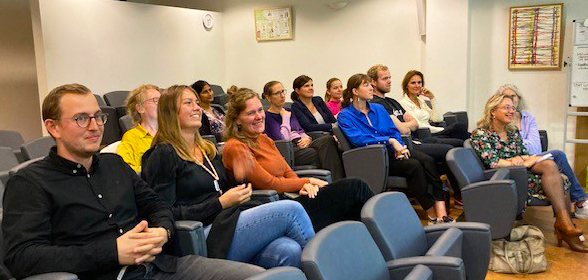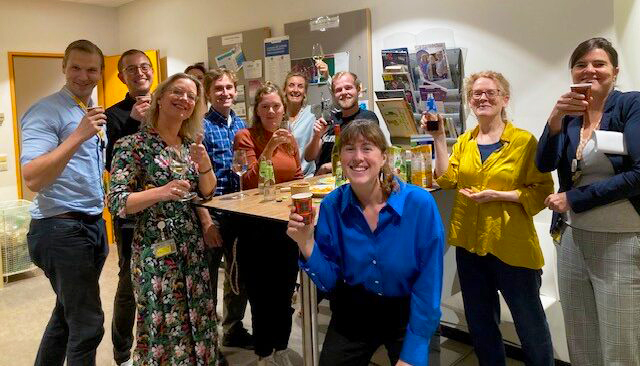Building Bridges
Clinical Genetics and Community Genetics
In an innovative effort to promote collaboration and new research initiatives, the Clinical Genetics and Community Genetics & Public Health Genomics sections at the Department of Human Genetics have embarked on a series of bridge-building sessions. This initiative represents a unique convergence of two distinct yet complementary fields within the same department and building.
“It is a unique situation to have the combination of these two sections in one department and in one building! The sessions were initiated to get to know each other better, initiate more collaboration in research projects, and develop new research ideas.”
Professor Lidewij Henneman, Head of Section Community Genetics

Clinical Genetics is traditionally focused on diagnosing and managing genetic disorders in patients and their families. In contrast, Community Genetics & Public Health Genomics, with its multidisciplinary approach, expands its reach into the broader community, focusing on the responsible integration of genetic advancements in society.
The bridge-building sessions play a key role in facilitating knowledge exchange between the two sections. This collaboration enhances the understanding and anticipation of emerging technologies in therapy development, genetic diagnostics and screening, with a focus on their potential impact on patients and society.
“There is also a trend in clinical genetics that more and more healthy individuals are being referred to our department with questions about their future risk of developing a genetic disease. Presymptomatic genetic testing is one component, but with the continuous emergence of new technologies such as direct-to-consumer genetic testing, we need to anticipate the next generation of genetic referrals and questions.”
Professor Mieke van Haelst, Head of Section Clinical Genetics
In the atmospheric cinema room of the Clinical Genetics Section, team members from both sections presented their research projects. The meetings were concluded in the lounge with drinks and further informal sharing of plans.
This dynamic interface between patient-oriented and community-focused approaches has already proven to be successful in sparking new ideas and energy. New collaborations have since been established, including research on perspectives of parents in the Caribbean Netherlands who have a child with congenital heart defects, staff exchanges with institutions in Europe and Canada, and a dialogue on the implications of polygenic risk scores, which assess an individual’s predisposition to certain diseases based on the combined effect of multiple DNA variants across their genome.

The sections plan to continue their sessions and draw up new collaborative projects and plans for the future, also incorporating other sections of the Department of Human Genetics. This ongoing synergy promises not only to advance our understanding but also to enhance the practical applications of human genetics in improving health outcomes.